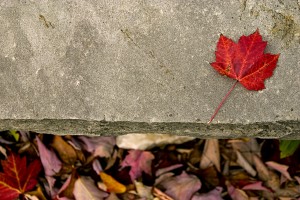Re-discovering the wonder of the everyday

The world is short on wonder. The irony is that the world has never been more full of things to wonder at.
In the last year alone scientists developed actual Spiderman string, put a machine on Mars and allowed the world to watch, freefell from the edge of space and obtained video footage of the real life Kraken. These are all obviously wonder-worthy activities, yet we don’t wonder at them.
We get a glance between memes, a conversation with friends before class and an analysis by an expert somewhere.
Most people no longer see something amazing and feel free to stop and stare. Society has even managed to change the meaning of the word.
Originally wonder referred to something that was worthy of marvel but today it refers to the act of curiosity.
Wonder was deemed a primary emotion and was revered by the Greeks as they believed it led them on the path to science.
Later, French philosopher René Descartes agreed with wonder’s place as a primary emotion but saw it as a negative thing. He said wonder, which he called, “wundran” could lead to science but more often wasted people’s time.
Descartes and those after him wanted to move wundran from marvelling to curiosity and change the first step to science and the world has been trapped in it ever since.
We give a two-second appreciation to the awesomeness around us and skip directly to the who, what, where, when, how and why. It’s about the product, not the process.
Rather than wasting time with wonder, our society goes straight to wondering and gets things done.
But what have we lost? With the systematic death of wonder we’ve lost a vital part of life, as though walking through it with our eyes closed.
Yet we’ve managed to hang onto a piece of wonder. We still give the exceptional or things that peak our interest those two seconds of wundran, a first glimpse of Niagara Falls or the birth of a child.
We’ve graciously left wundran to the big moments, the once in a lifetime moments. That’s where the biggest loss is; we’ve constrained wonder to the big moments and removed it from the everyday.
The individual no longer immerses themselves in wonder. The little child might but they grow out of it all too quickly.
Adults don’t see it because we’re not looking, we’ve forgotten how. However, the small wundrans and the joy that accompanies them rarely shout “wonder.” They usually whisper, “Hey, that’s a little cool.” We just need to be listening.
In order to re-discover the wonder of the everyday, we’re going to have to go looking for it.
There’s wonder in watching a bug crawling vertically up a blade of grass, eating cake, seeing snowflakes landing on a mitten or even in the way classroom seats bounce up and down.
The key is not to immediately inhale the wonder but to embrace it. To let it percolate before diving in and love the little things.
The benefits of wonder are not quantifiable; we can’t put them in a jar and measure them. But the benefit is there just the same.
The ability to see the wonder and therefore find joy within the normal brightens the day. It keeps us from falling into depression during those blocks of life where the big wonders don’t dwell.
Life is miraculous and it wants us to take note, not for itself but for our own sakes. We need to take note to discover joy and then take note again.
It’s a never ending process that we cannot let die because there’s a disclaimer on life’s invitation. It’s an invitation to endless wonder but not all wonders are endless.
letters@thecord.ca


